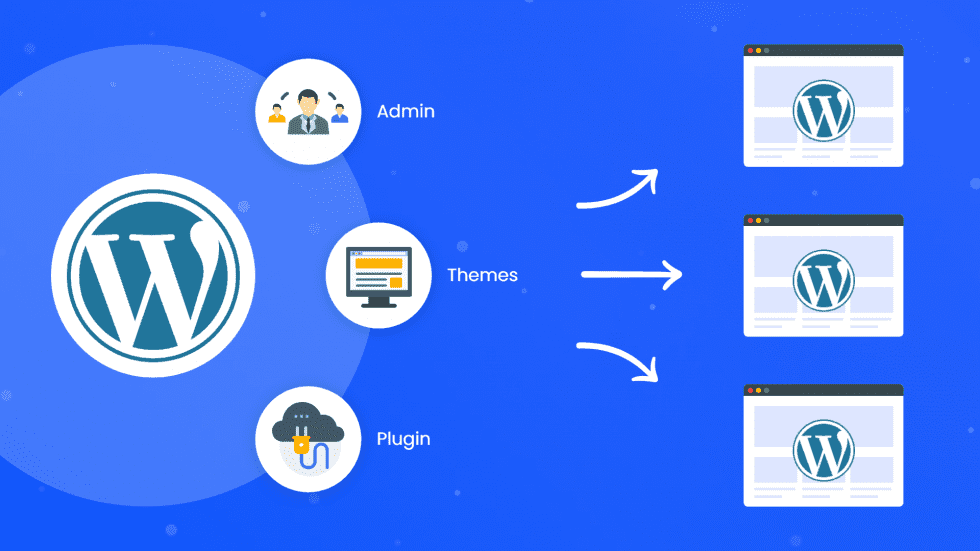AppMySite is a natural choice in case you have a WordPress website and wish to build a mobile app for it.
However, if you have a number of websites, building an app for each website can be a challenge. It is furthermore difficult to manage each app separately on your AppMySite account, and later publish them on the app stores.
The Multisite add-on essentially allows you to connect your apps and build a single mobile app on our free app maker for different websites. Instead of launching an app for each website separately, you can use the Multisite add-on and generate one app build that reflects all the apps you connect.
How does the add-on really work? Is it the right solution for your websites? This article provides a complete guide on how the add-on works.
What does the Multisite add-on do?
Let’s assume you decide to subscribe to the Multisite add-on. You go to the Add-ons screen and subscribe. What happens next?
The following points give an overview of the next steps:
- In your AppMySite account, you can next navigate to the Multisite screen. Here, you can start adding all the apps you’ve created with your AppMySite account.
- The Multisite add-on essentially allows you to connect the different apps you’ve built in your account.
- You can assign a country to each app you connect with the add-on. You can also add, remove, or change countries any time you like.
- Once you generate the build and launch the app, the app users will see a pop-up to choose the country.
- Based on the country they choose, your app will load the build you assigned for that specific country.
You will have to design, connect, and generate a build of each connected app separately.
Who should use the add-on?

Let’s assume you own a group of websites, each targeting audiences in different countries. Publishing and managing each app separately can be a complicated task, even on a seamless DIY app builder like AppMySite.
By subscribing to the Multisite add-on, you can connect each app you’ve built to the different websites you own. Next, you can assign a country to each app, preferably making a choice based on your target audience.
The Multisite add-on is an ideal solution in case you have a multi-national audience. In such a case, you can offer a unique customized experience based on the country a user chooses.
Additionally, you can also build a single app for your WordPress-based multisite networks. You can simply build an app for every website in your network and connect them using the add-on.
Read: What is multisite: A guide to building a network of websites with WordPress
Why is it important to assign a country to each app?
After subscribing to the Multisite add-on, you will notice that it is necessary to assign a country for each app you connect.
You might find this option a little limiting. In case your audience is based entirely in one country, choosing a different country for each app may not make a lot of sense.
Both Apple App Store and Google Play Store have guidelines which state that unless multiple apps are differentiated by location, they cannot be published as a single-packaged app.
In making our users assign a country to each app, we’re merely being compliant with guidelines set by the app stores. While the Multisite add-on is perfect for any website owners with audiences covering multiple countries, it’s not the best solution for single-country websites.
In conclusion
It is very easy to build a WordPress app on AppMySite. However, managing five, ten, or more apps simultaneously can be a big challenge.
The Multisite add-on is a solution to this problem. You can connect apps you’ve created using the add-on and manage them from one unified dashboard. Additionally, you can assign a country for each app you connect to localize the app effectively.
This article discusses the core working of the Multisite add-on. If you own multiple websites and wish to launch a premium app for all of them, get started with AppMySite.
